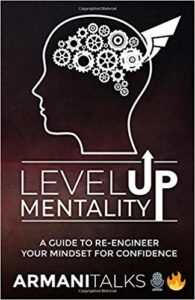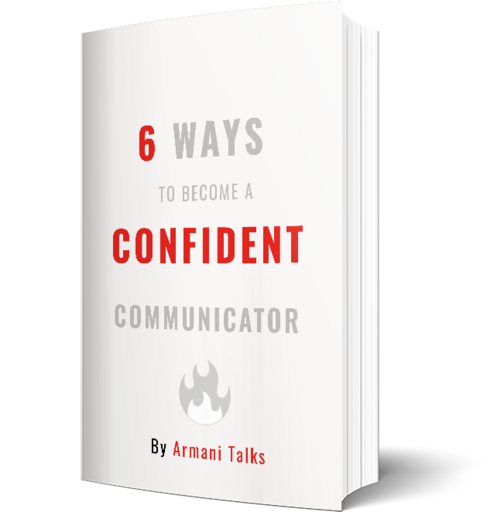6 Storytelling Lessons from Harry Potter
When I was a little kid, I wanted to be Harry Potter.
I’d ask others if I looked like Harry Potter.
When they said, ‘Ha! Not at all.’
I didn’t believe them.
They needed to get their eyes checked.
For birthdays, I’d ask for Harry Potter merchandise.
Once I got my glasses, I felt like I was one step closer to becoming a wizard.
I’m sure you can guess who I dressed up as during Halloween.
Corny, I know.
But that was how 7-year-old me acted.
Harry Potter is a goliath of a media empire.
It’s an unkillable franchise.
Let’s uncover the storytelling principles that allowed the franchise to become so powerful.
Storytelling Lesson #1: The Books Glide
I consider writing great when my mind can glide through the words.
It doesn’t matter if you are a 50-year-old or a 5-year-old…
Reading Harry Potter is a seamless task.
‘Why is the gliding feature so important for storytelling, Armani?’
Because whenever we are making people think too much with fancy words & unnecessary jargon…
It’s similar to driving to a location while being constantly met with speedbumps.
JK Rowling has a simple delivery that allows her books to glide.
The simplicity allows the reader to be more invested in the story.
Storytelling Lesson #2: Power of Outlines
The following tip is polarized among fiction writers:
- Create outlines.
Stephen King is not a big fan of outlines.
He likes it when a story unfolds & he is surprised by what he is creating.
But JK Rowling outlines everything.
If you’ve read the Harry Potter series, then you may have been intrigued to see how little details from one book connects to another book.
The books are all organized under 1 connective tissue.
Storytelling Lesson #3: Kill Off Potential Stars
Have you ever watched Game of Thrones?
One thing that makes the show unique is that you never know who is going to die.
Before, I thought the main characters or potential stars always stayed alive while the ‘eh’ characters were killed.
Not for Game of Thrones.
Everyone is fair game.
Harry Potter has a similar strategy.
Throughout the series, there were a few times when potential stars were killed.
When it happened, I thought:
‘What the hell? I thought I was going to see this person in the next book!!’
Although losing a beloved character stings at first, it keeps the consumer invested in the story.
Time to flip the page.
Storytelling Lesson #4: Crossover Effect
Thus far, I’ve been referencing the Harry Potter books…
But many people have never read the books.
They have watched the movies though.
One common pattern that I have noticed with books that can effortlessly be turned into movies is that they are either:
-Very realistic
Or
-Very imaginative
For example, Dan Brown is the creator of Angels & Demons + DaVinci Code.
Although his books are fiction, there are plenty of times I think:
‘I could see this happening in real life.’
On the other hand, Harry Potter is a highly imaginative story.
This is where CGI (computer-generated imagery) can do a great service to the author’s imagination.
Harry Potter really comes alive when the audience sees the wands in action, the flying brooms, and the ugly ogres.
Storytelling Lesson #5: Admirable Villian
Here’s a storytelling hack:
- Fill your hero with many admirable traits + 1 negative trait.
- Fill your villain with many negative traits + 1 admirable trait.
The main villain in the Harry Potter series was Voldemort.
His negative traits were that he was a killer, power-hungry, and lacks empathy.
But his one admirable quality was that he had the skillsets to be one of the greatest wizards ever.
Admirable quality does not always have to be good.
It can also mean, ‘relatable.’
For example, Scar from Lion King.
He was a mean lion who let his brother die.
Evil.
But his one relatable quality was the pain of being in the shadow to a sibling.
Plenty of folks who were overshadowed by a sibling may subconsciously understand Scar’s jealousy.
Ultimately, a memorable villain cannot only be bad.
They need at least one admirable or relatable quality.
Here’s a quick way to check if you stumbled onto a great villain.
Imagine if the entire series was rebooted from the perspective of the villain, would people watch it?
I know I’d watch the reboot of Harry Potter if it was created from Voldemort’s lens.
Storytelling Lesson #6: Rabid Fanbase
A few years back, JK Rowling made the announcement that Dumbledore was gay.
When she announced that Dumbledore was gay, it caused an uproar.
Many said there were no clues of his sexual orientation.
And many felt that his sexual orientation was not relevant to the story.
However, JK Rowling insisted that he was gay.
Plus, she pointed to a few moments where she left clues about his sexual orientation.
Guess what?
The audience didn’t care.
They said:
‘Well, what the hell does she know?’
Just imagine!
People are dismissing the creator of Harry Potter as she shares a Harry Potter fun fact.
This goes to show that the Harry Potter series has outgrown JK Rowling.
It doesn’t matter what she says.
The audience members have their own perceptions of the brand and will gladly dismiss the creator when she says something contradictory to the story.
When creating a story, think:
‘I want this story to outgrow me. I want the consumer to shoot down my insights if it is in contradiction to the story.’
Thinking like this makes you want to create a timeless piece…
Level Up Your Storytelling Skills
I’m only scratching the surface of the amount of storytelling lessons within Harry Potter.
There are plenty more.
Maybe I will write a book on all the storytelling lessons within Harry Potter!
Just kidding.
I’m not trying to get sued.
Here’s a better idea…
If you want to get more practical insights into storytelling, be sure to check out my book:
- The Art & Science of Storytelling: Learn How to Tell Better Stories in Conversations, Business Communication, Leadership & Brand Building
Within this book, you will learn more about:
- Creating a relatable hero.
- Creating a compelling villain.
- How to create a memorable clash between the hero and the villain.
- Strategies to create vivid settings.
- How to sprinkle memorable lessons into your stories.
And much more!
Get the Art & Science of Storytelling Here:
✨Ebook
✨Paperback/Kindle
✨Audiobook
– ArmaniTalks 





